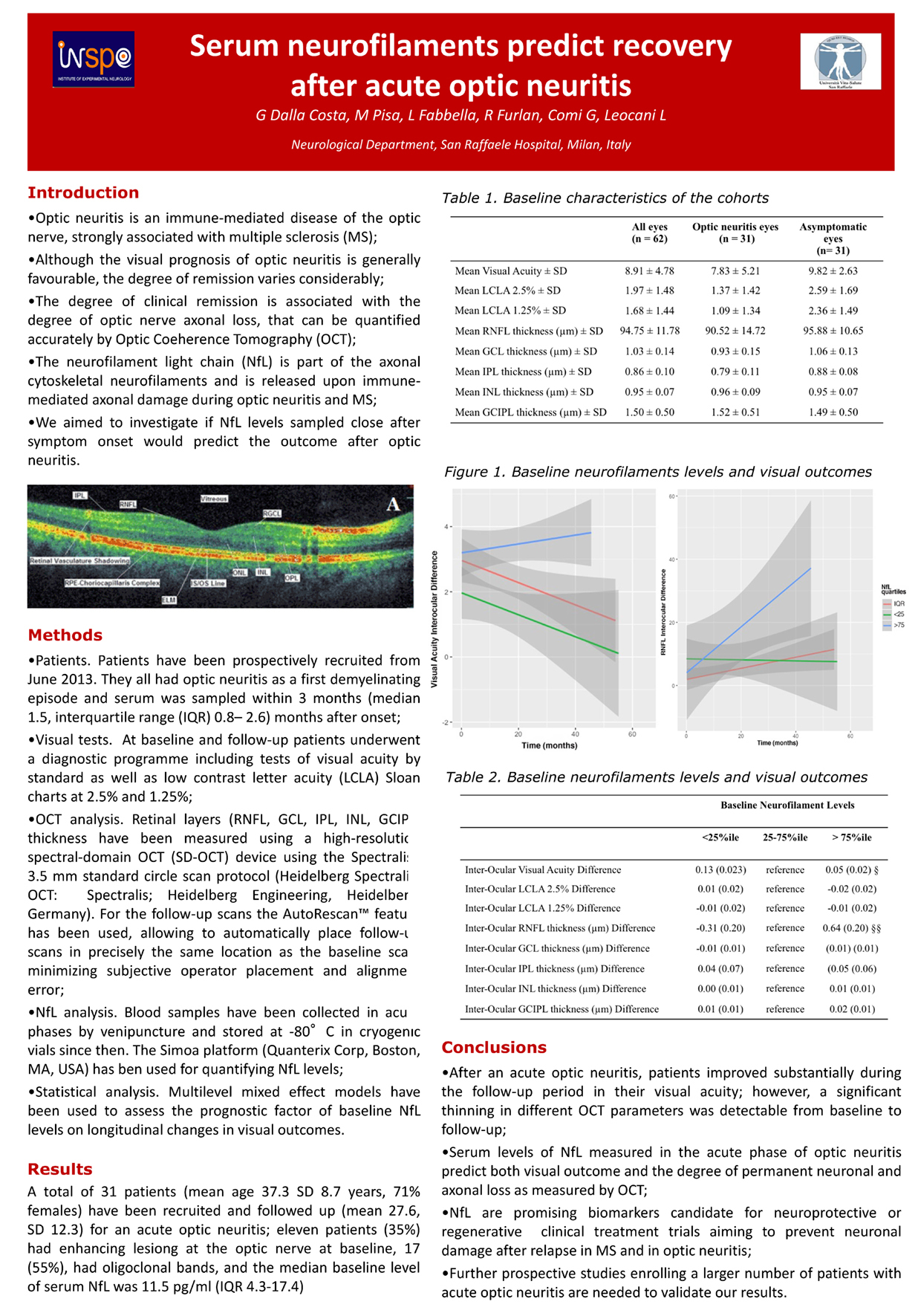Serum neurofilaments predict recovery after acute optic neuritis
Abstract
Background:
Optic neuritis is an immune-mediated disease of the optic nerve, strongly associatedwith multiple sclerosis (MS). Although the visual prognosis of optic neuritis is generally favourable, the degree of remission varies considerably. The degree of clinical remission is associated with the degree of optic nerve axonal loss, that can be quantified accurately by Optic Coeherence Tomography (OCT). Neurofilament light chain (NfL) is part of the axonal cytoskeletal neurofilaments and is released upon immune-mediated axonal damage during optic neuritis and MS. We aimed to investigate if NfL levels sampled close after symptom onset would predict the outcome after optic neuritis.
Methods:
We included 31 patients with optic neuritis as a first demyelinating episode. Patients underwent visual tests, OCT, magnetic resonance imaging (MRI) and lumbar puncture. NfL levels were measured through use of a Simoa HD-1 instrument (Quanterix). Longitudinal changes in interocular
difference in visual acuity and OCT parameters were chosen as primary outcome measures of visual loss to account for their inter-individual variability. Multilevel mixed effect models have been used to assess the prognostic factor of baseline NfL levels on longitudinal changes in visual
outcomes.
Results:
Patients (mean age 37.3 years, SD 8.7, 71% females) had a mean follow-up of 27.6 months (SD 12.3). The mean inter-ocular visual acuity difference decreased with the follow-up (baseline 2.8 SD 1.2, follow up 2.1 SD 1.5, p <0.05), while mean inter-ocular RNFL thickness difference significantly increased with time (3.2 SD 10.2 at baseline, 12.7 SD 15.2 at follow-up). Basel NfL levels above 75°ile were significantly associated with an increase in inter-ocular visual acuity difference (B 0.05 SE 0.02, p <0.01) and inter-ocular RNFL thickness difference (B 0.64 SE 0.20, p <0.01).
Conclusion:
NfL is a promising biomarker of visual outcome after optic neuritis. This could aid neuroprotective/regenerative medical advancements.

